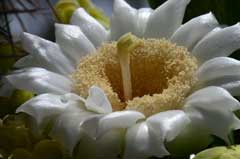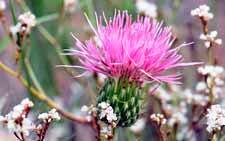Bahiopsis parishii, Parish Goldeneye
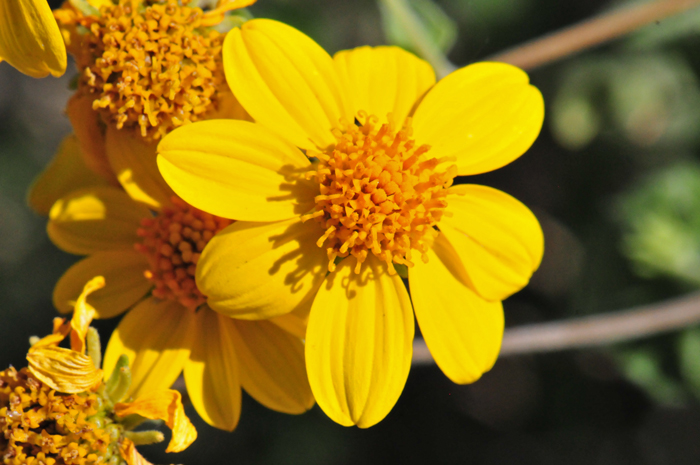
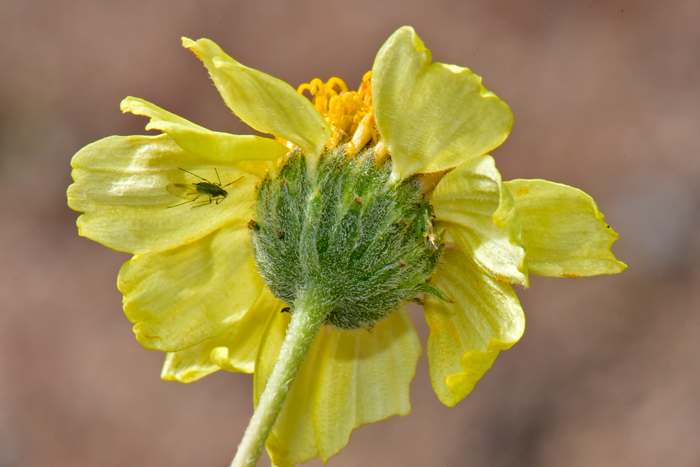
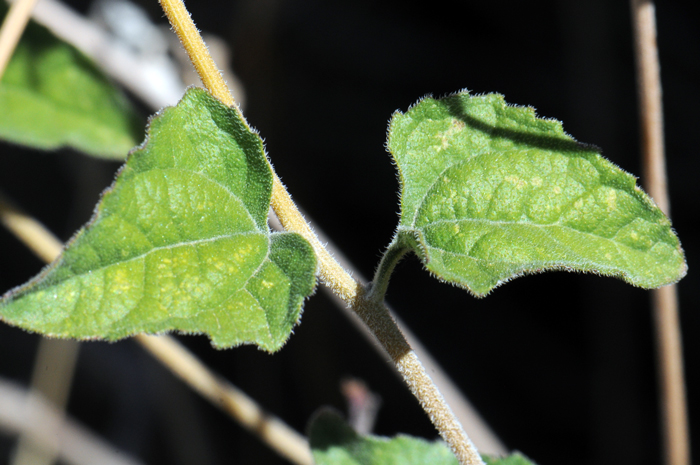
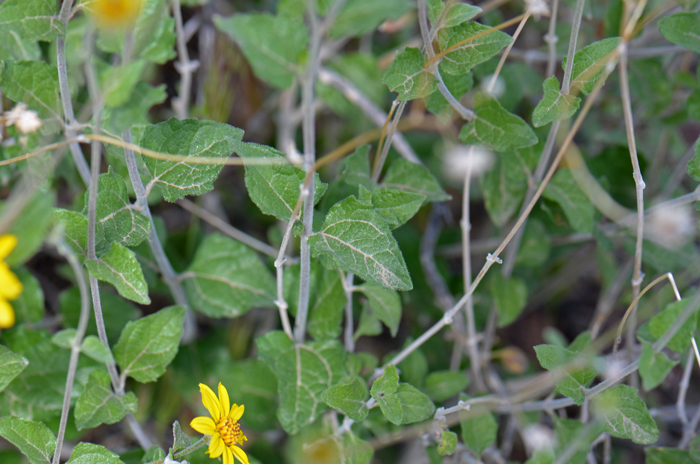
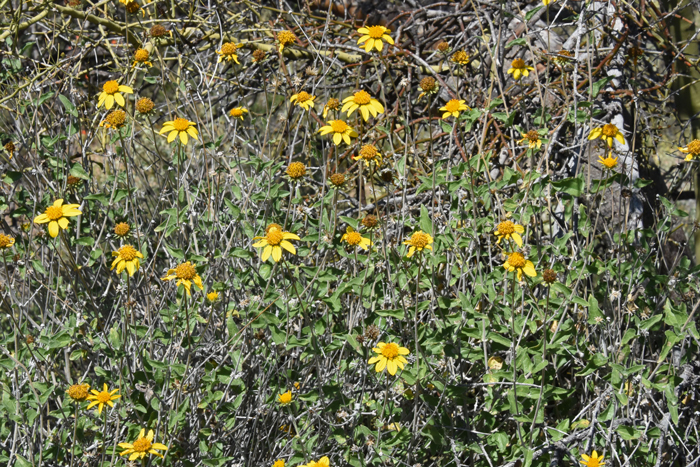
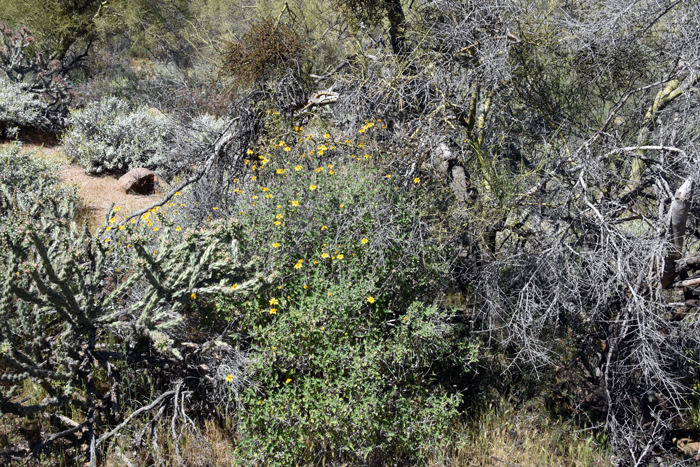 Unknown
UnknownScientific Name: Bahiopsis parishii
Common Name: Parish Goldeneye
Also Called: Parish's Goldeneye, Nevada Goldeneye, Parish's Scrub-Aster, Shrubby Goldeneye
Family: Asteraceae, Sunflower Family
Synonyms: (Viguiera deltoidea var. parishii, Viguiera parishii)
Status: Native
Duration: Perennial
Size: 2 to 3 feet (60-91 cm) or more (4 feet 120 cm)
Growth Form: Shrub or subshrub; erect, multiple branches, stems slender and rough or harsh to the touch (hispid); plants messy (straggly).
Leaves: Green; shiny, lower leaves (proximal) mostly opposite although upper leaves (distal) sometimes alternate; leaf blades triangular or deltate or deltate-ovate; leaves with stems or stalks (petioles); leaf edges or margins toothed or smooth (entire); leaves are rough or harsh (hispid) to the touch.
Flower Color: Yellow; large, 2 inch (5 cm) flowers, flowering stalks or peduncles long, up to 6 inches (15 cm) or so; flowers may be singles (solitary) or in cyme-like clusters of 3 to 5; flowers with both ray (8 to 18, yellow) and disk (50+, yellow) florets; bract or phyllaries surrounding heads are distinctive, lance-linear and either equal or very unequal in length; fruit is a cypsela.
Flowering Season: January or February to June and September to October, two blooming seasons, spring and fall.
Elevation: Up to 3,500 feet (1,000 m) or more (5,000 ft (1,500 m))
Habitat Preferences: Deserts in washes, dry mesas, rocky slopes with good drainage; generally a plant of desert regions and often this species is associated with creosote bush communities.
Recorded Range: Southwest United States; AZ, CA, NV, NM, TX; Baja California and northwest Mexico (Sonora). It is found in the southeast corners of both California and Nevada and the western ⅔ of Arizona and generally in the southwest portions of New Mexico and Texas.
North America & US County Distribution Map for Bahiopsis parishii. (as Viguiera parishii)
North America species range map for Bahiopsis parishii:
North American range map courtesy of Virginia Tech, Dept. of Forest Resources & Environmental Conservation
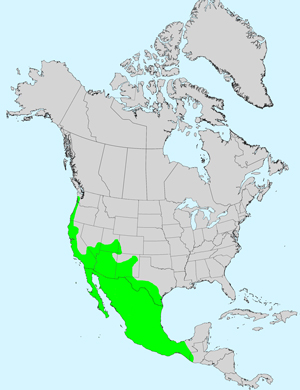
U.S. Weed Information: Unknown
Invasive/Noxious Weed Information: Unknown
Wetland Indicator: Unknown
Threatened/Endangered Information: Unknown
The genus Bahiopsis was published by Albert Kellogg in 1863.
The genus Viguiera was published by Karl Sigismund Kunth in 1820.
For the genus Viguiera which is synonymous with Bahiopsis; in the Southwestern United States Arizona has 4 species of the genus Viguiera, California has 3 species, Nevada has 2 species, New Mexico and Texas each have 4 species and Utah has 0 species. All data approximate and subject to revision.
Comments: Parish Goldeneye is one of the more common subshrubs in low desert habitats in Arizona and southeast California. It is easily recognized with its bright yellow flowers, shiny green triangular shaped leaves and whitish (canescent) stems. Parish Goldeneye is often seen growing in and around larger desert shrubs or trees.
In Texas, Parish Goldeneye is sometime used for re-vegetation, bank stabilization, and erosion control.
Parish Goldeneye is closely related to, and looks very similar to, Bahiopsis deltoidea and is sometimes considered a variety of that species.
The genus Viguiera (Viguier'a:) was named after Louis Guillaume Alexandre Viguier (1790-1867), a French physician and botanist.
The genus Bahiopsis was published by Albert Kellogg in 1863.
The genus Viguiera was published by Karl Sigismund Kunth in 1820.
The species epithet "parishii" (par'ishii:) is named after brothers Samuel Bonsall Parish (1838-1928) and William Fletcher Parish (1840-1918), both were botanical collectors who lived on a ranch in San Bernardino, California and made extensive exploring trips through the mountains and deserts.
